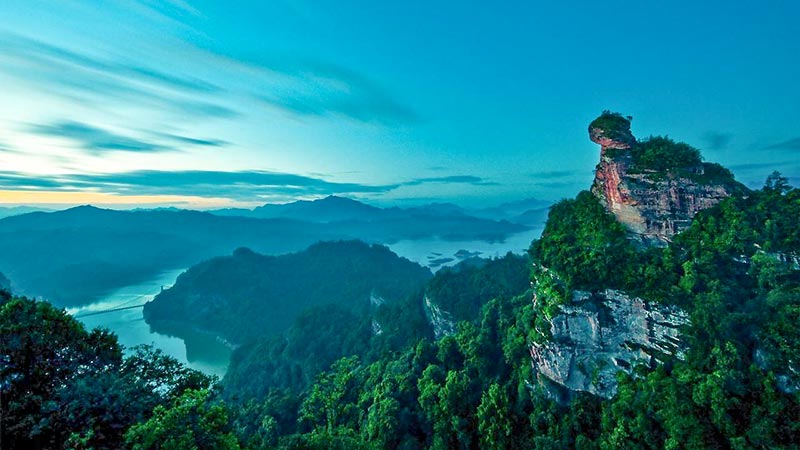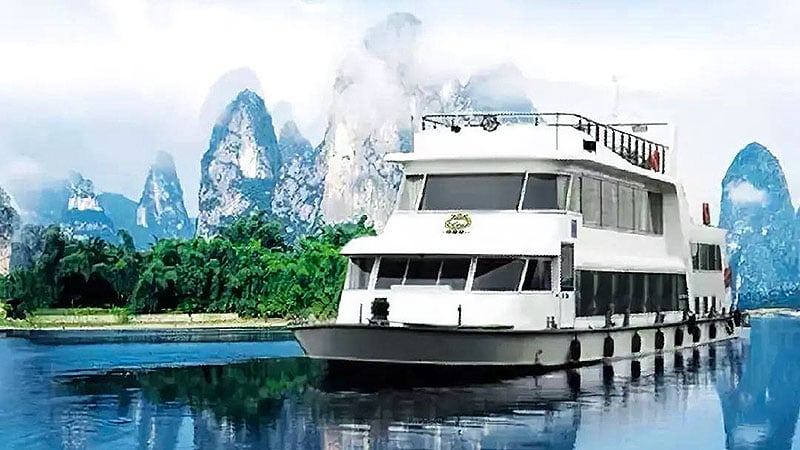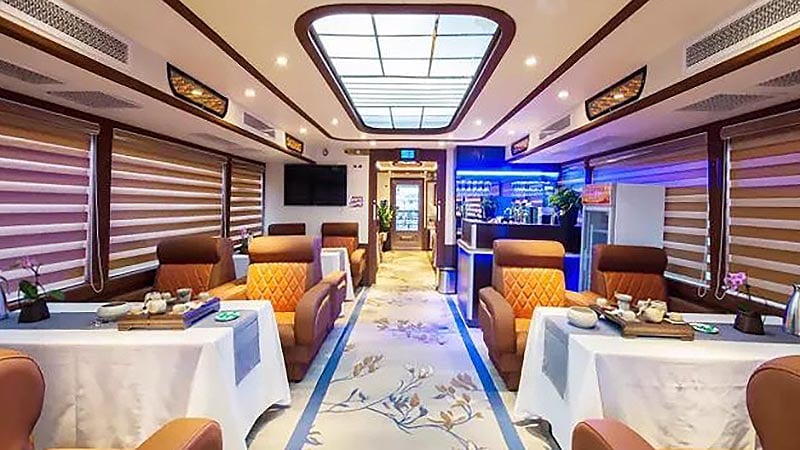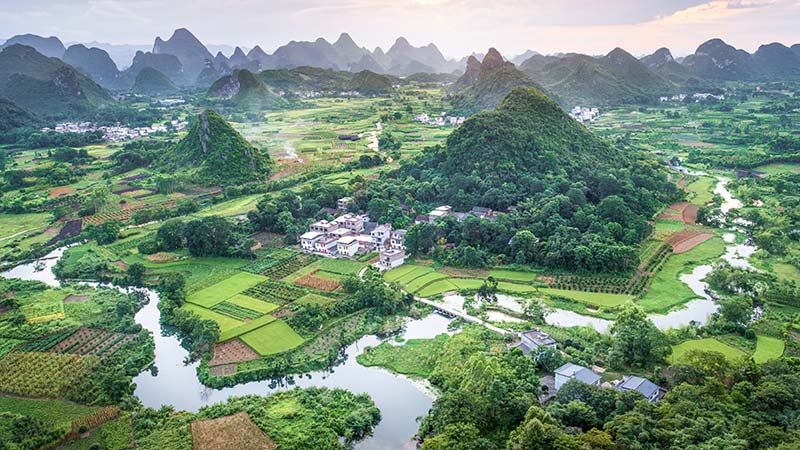Take a cruise up the Li River to Yangshuo and you will understand the Chinese saying, “The scenery of Guilin is second to none.”
Perhaps the most notable feature of Guilin is the karst topography. Visually stunning and totally different from anywhere else in China, the karst mountains of Guilin were formed about 360 million years ago after a seabed overlay of limestone up to 4,000 meters rose up. The ‘collision’ that occurred between Asia and India and formed the Himalayas exposed the limestone. After weathering from rain and flowing water, the limestone has eroded, copy rolex watch leaving the thousands of peaks and narrow valleys that are the predominant aspect of Guilin’s landscape. No matter where you go in Guilin, there are many natural and dramatic limestone peaks and hills to see, especially along the Li River.
The Li River back story

If you’re going to spend time on the Li River, it’s worthwhile learning a little of its back story.
The Li River originates at Mao’er Mountain. The translation for this name is Kitten Mountain because of its unusual resemblance to a kitten (or so it’s said). Reaching 2,142 meters, Kitten Mountain is the highest peak in Guangxi and is located about 80 kilometers from Guilin. However, your cruise won’t start at the mouth of the 439 kilometer river.
Instead, most people depart from Guilin and cruise to Yangshuo, an 83 kilometer stretch that is arguably the most beautiful section of the Li River.
There is debate as to the origins of the name Li. One explanation is that it arises from the Chinese word xiang li (相离) which means “separating”. Because Xiang River and Li River are separated by a low divide broken by a saddle of the Ling Canal, built in 215BC by China’s first emperor, Qing Shi Huang.
A second explanation is the word li (漓) means clear. As you cruise the river you’ll see why this could be a more plausible reason. Although it’s not entirely certain why the water is clear, it is commonly thought that because of the limestone, very little sand flows in the river. Any sand that does find its way there can ‘fall’ into the underground streams. More recently, environmental protection policies have helped preserve water quality, even as the river’s popularity as a travel highlight has grown.
No mention of the Li River would be complete with mention of the Ling Canal, which is located about 70 kilometers from Guilin. Commissioned in 214BC by Emperor Qin Shi Huang, the canal connects the Xiang and Li Rivers and has been a major water transport route between South and Central China for over 2,000 years.
Why cruise the Li River

In China, there are so many highlights competing for inclusion on your travel itinerary, making it hard to decide what stays and what goes. So when it comes to Guilin, you may well wonder, ‘Why should I cruise the Li River?’. Any local guide will tell you that a visit to Guilin means just one thing: you must take a Li River cruise.
And if you need more convincing, here are just a few other reasons it’s worth boarding one of the river cruise boats. [Hint: there is amazing natural beauty for the dull duration of the cruise].
Apart from the limestone peaks, you will also see a particular kind of bamboo growing along the river bank. The bamboo’s branches look a lot like the tail of Phoenix, and in true Chinese style, it is called Phoenix tail bamboo. Locals have devised a myriad of uses for this bamboo. Chopsticks, sheets, mats, clothes, scaffolding, and bamboo rice are among the many ways it’s been employed. In fact, the stems of Phoenix tail bamboo are so usefully thick that locals configure it into a raft. Surprisingly, Phoenix tail bamboo is a relatively recent addition to the Li River. It was only in 1960, when China’s former Premier Zhou Enlai took the Li River cruise, that he suggested Phoenix tail bamboo should be along the riverside to enhance the landscape further.
Wildlife abounds along the banks and surrounds of the river. Egrets, crows, golden eagles, and black kites are sighted easily, while cormorants trained by fishermen to catch fish, provide a window into the lifestyle of locals. Although perhaps not appreciated by westerners, local cormorant fishing remains a tradition of the inhabitants along Li River. Working only at night, the fisherman then sells their catch at the morning market.
Water buffalos are also a feature along the river. Perhaps the best representation of a relaxed river lifestyle, they are used by local farmers to plow rice fields. As there are only two crops annually, water buffaloes are only required twice a year. In between ploughing, the water buffaloes are free to wander along the riverbank or swim in the water. Local people never eat buffalo’s meat, but they do drink buffalo milk, believing to be more nutritious than cow’s milk.
What to expect on a Li River cruise


While it’s not even close to the Yangtze or Yellow Rivers in terms of size, however, don’t feel you’re missing out with a cruise along the Li River. Differences between cruise boat quality are minimal, with most rating three or four stars.
Cruises depart from Mopanshan Pier in Guilin around 9:30am and arrive in Yangshuo around 1:30pm after about four hours on the water.
Travel with your passport and cruise ticket as both are needed to secure your designated seat. Boats comfortably accommodate 100 passengers over three decks, and while a basic meal is included, you’re best focusing your attention on the scenery. You don’t want to miss the countless limestone peaks, crystal clear water, and the stunning landscape on either side of the river. Yuanbao Mountain near Xingping Town is considered the most stunning, a fact further cemented in the minds of locals and travelers alike, who can find its image captured on the back of 20RMB banknote.
Discover Yangshuo at the end of your Li River cruise

Li River cruises end at Yangshuo, a lovely old town with a rich history spanning 1,400 years. Although an influx of travelers in recent decades has seen Yangshuo grow up, it does retain an uncharacteristic relaxed vibe not found in China’s big cities. Set in peaceful and relaxing countryside, Yangshuo is the ideal place to gain a view of local life from the ground.
Apart from wandering popular West Street, where you’ll find souvenir and craft shops, cafes, restaurants and bars, consider renting a bike. Well worn tracks make exploring the rural villages easy, and the idyllic scenery with its rice fields, tea gardens, canals, water buffalos, local farmers is perfect subject matter for photography enthusiasts.
Other activities to take advantage of in Yangshuo include a bamboo raft on Yulong river; cooking lessons using local produce; Tai Chi or calligraphy lessons for the opportunity to gain a deeper understanding of Chinese culture; or a hike up Xianggong Hill for spectacular views overlooking Li River. Yangshuo is also home to the famous show, Impression Sanjie Liu, which includes hundreds of local farmers who perform on the water against a karst mountain backdrop.
| Cruise Prices | |
| Adults | 4 star cruise prices range from ¥360 to ¥480 |
| Children (above 149cm) | full price |
| Children (above 120cm – 149cm) | half price |
| Children (below 120cm) | free (no seat) |
| Food | Yes | Basic meal included in cruise ticket price |
| Transport | Yes | Transport by car or bus available on disembarking at Yangshuo |
| Tours | Yes | |
| Family friendly | Yes | |
| Close to city | Yes | |
| Opening hours | Cruises available daily | |
If you’re traveling to Guilin, be sure to complete your visit with a leisurely Li River cruise and overnight stay in Yangshuo. Enjoy the easy, relaxed tempo of the cities and the river that connects them, while taking advantage of family friendly holiday activities to enhance your collection of travel memories. And the bonus? All arrangements can be made easily with the ChinaTours.com team. Make the most of every minute of your vacation and enjoy a fully guided experience, allowing you to relax and learn all there is to know about this incredible corner of China. Reach out to our travel team with your questions. We are here to help.

